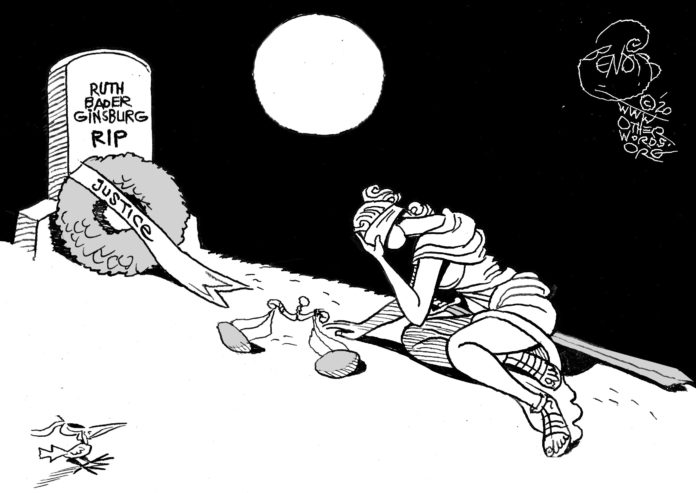When men legally controlled women
by Jill Richardson — OtherWords
This year marks the 100-year anniversary of the 19th Amendment, when women got the right to vote in all 50 states. Limiting voting to men at the nation’s founding was part of the legal doctrine of coverture, in which a woman was legally represented first by her father and then by her husband.
Denying women the right to vote was only one part of coverture. Here are a few more.
Under coverture, married women could not own property. They first gained that right in 1848.
Under coverture, by marrying a man, a woman was giving him access to her body “till death do us part.” Marital rape did not become illegal in all 50 states until 1993. Even now, sometimes marital rape has lesser penalties than rape that occurs between people who are not married.
At our nation’s founding, love was seen as a flimsy and even irresponsible reason for marriage. Couples were married for economic reasons — he had a large farm, she had a sizable dowry, and so on.
Divorce was rare and legally limited. There were only a few legal reasons for divorce — typically adultery and desertion. Falling out of love wasn’t a reason to divorce because people were skeptical that love was necessary in a marriage in the first place.
At independence, every single state had a law banning sodomy under penalty of death. While these laws sound like they criminalized homosexuality, in fact they often also banned non-procreative acts by heterosexuals or even with oneself. Fortunately, they were rarely enforced.
Since 1776, the family has been changing from a patriarchal one led by a male head of household with a goal of social order and economic stability to one that can take many forms and strives for the goal of love and emotional fulfillment.
When you hear the slogan “make America great again” — whether you support Trump or not — you may think it harkens back to a time where families resembled Leave It To Beaver. White Baby Boomers, at least, might warmly remember this time from their childhood.
But believe it or not, the 1950s was a strange blip in the history of the American family.
It’s true — the divorce rate was low and more families than any other time in America’s history had a father who worked and a mother who stayed home. However, the changes that have occurred since the 1950s are in fact a return to trends that predate the ‘50s — and are arguably more representative of the rest of American history.
Additionally, the divorce rate reached its peak in the 1980s and it has declined since then.
Our country today is not without problems. The part of the 1950s I’d like to recapture is the strong social safety net with good jobs that paid a living wage.
But I’m glad for the progress we have made allowing marriage to bring emotional and sexual satisfaction to both partners and allowing them to leave when it doesn’t. I cherish the increased equality for people of all races, genders, and sexual orientations we have gained in the century since women got the vote.
All that, of course, is under siege.
I don’t want to make America “great again” as it was in the past — I want to continue making it better in the future. We can do that by keeping the best traditions of the past while still identifying how to “form a more perfect union” in the years to come.
We’ve come a long way in the last century since the passage of the 19th Amendment. As anyone watching our current fights can tell you, we have a lot to lose. But if we fight, how much more can we achieve in another 100 years?
Contact us by email at fund4thepanamanews@gmail.com
To fend off hackers, organized trolls and other online vandalism, our website comments feature is switched off. Instead, come to our Facebook page to join in the discussion.
These links are interactive — click on the boxes












